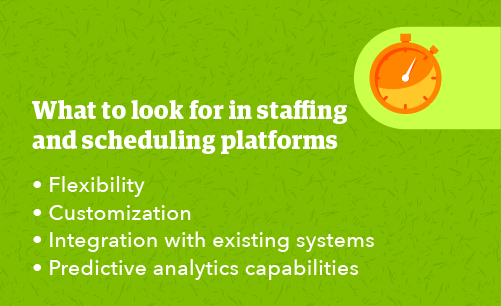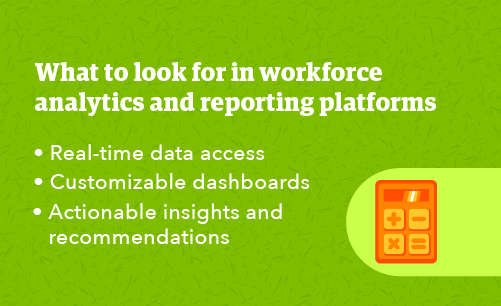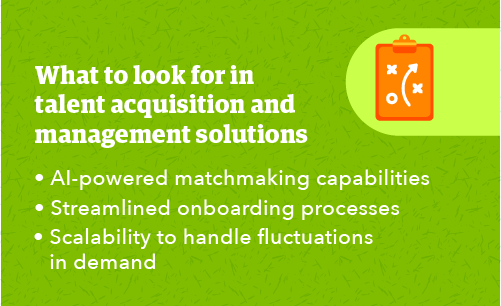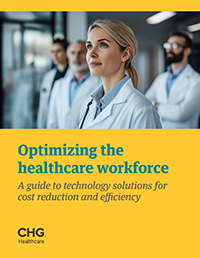
The healthcare industry faces significant workforce challenges, from staffing shortages and burnout to rising labor costs. These pressures not only impact patient care, but also strain operational budgets. To address these challenges head-on, many healthcare organizations are implementing technology solutions to help optimize workforce management while maintaining high-quality care.
The growing healthcare workforce crisis
Staffing shortages place immense pressure on healthcare organizations, leading to workforce gaps that can impact patient care, increase stress on remaining staff, and drive up operational costs. A recent report by Mercer highlights a projected shortage of 100,000 healthcare workers in the United States by 2028. Nurse turnover rates exceed 20% annually in many hospitals, contributing to staffing instability and increased reliance on temporary labor.
In addition to workforce shortages, the American Hospital Association reports that hospitals and health systems have seen a 17% increase in labor costs since 2019. This rise is attributed to factors such as wage inflation and expanded employee benefits aimed at retention. Manual scheduling, inefficient credentialing processes, and fragmented data management further contribute to increased costs and lost productivity.
Explore tech-driven solutions to modernize workforce management
Implementing workforce technology solutions can help healthcare organizations reduce costs, improve efficiency, and enhance patient care. Here are several ways that technology can drive meaningful improvements:
Leverage AI-powered staffing and scheduling platforms
AI-powered staffing and scheduling platforms automate shift assignments, reduce administrative burdens, and ensure adequate staffing levels. These tools can rapidly fill open shifts, track credentials, and ensure compliance with labor regulations. By leveraging predictive analytics, these platforms can also anticipate staffing needs based on historical trends and patient volume, further enhancing operational effectiveness.

What to look for: When evaluating staffing and scheduling solutions, look for flexibility, customization, seamless integration with existing systems, and predictive analytics capabilities.
Harness real-time workforce analytics and reporting
Real-time analytics and reporting tools provide healthcare organizations with deeper visibility into key workforce metrics. These platforms consolidate data across various sources to track labor costs, staffing ratios, overtime trends, employee turnover, and overall workforce efficiency. By leveraging workforce analytics, healthcare leaders can make data-driven decisions to optimize resource allocation, reduce unnecessary expenses, and improve retention strategies.

What to look for: When selecting workforce analytics and reporting solutions, prioritize real-time data access, customizable dashboards, and actionable insights that offer recommendations for optimizing labor costs, reducing turnover, and improving efficiency.
Streamline talent acquisition and management processes
Efficient talent acquisition and management platforms help healthcare organizations streamline the recruitment and retention of skilled professionals. Modern applicant tracking systems and onboarding automation tools enhance the hiring process by simplifying candidate sourcing, interview scheduling, and credential verification. AI-powered recruitment solutions can further improve hiring outcomes by matching candidates to positions based on skills, experience, and workforce needs.

What to look for: When choosing talent acquisition and management solutions, look for AI-powered matchmaking capabilities, streamlined onboarding processes, and scalability to handle fluctuations in recruitment demands.
Learn more: A guide to using AI to enhance the physician recruiting process
Plan for successful deployment
To ensure smooth implementation and maximize the benefits of workforce technology, healthcare organizations should consider several key factors:
- Integration with existing systems
- Robust data security and privacy measures
- Effective change management strategies
- A comprehensive ROI analysis

By carefully selecting and implementing solutions well-matched to their organization's needs, healthcare leaders can optimize workforce management, enhance patient care, and achieve long-term financial sustainability. The right technology enables organizations to streamline operations, improve decision-making, and empower staff, ultimately driving improvements in employee satisfaction, clinical outcomes, and overall organizational performance.
As the healthcare landscape becomes increasingly complex, leveraging healthcare staffing technology is no longer optional—it's a strategic imperative. With thoughtful planning and the right tools, healthcare organizations can transform their workforce operations and position themselves for success in the face of evolving challenges.
Want more information about implementing technology solutions into your healthcare staffing planning? Download the white paper by clicking the image below.

Contact CHG Healthcare today to learn how our innovative solutions can help you streamline operations, reduce costs, and drive better patient outcomes. Give us a call at 866.588.5996 or email ecs.contact@chghealthcare.com.
This article was created with the assistance of AI technology.